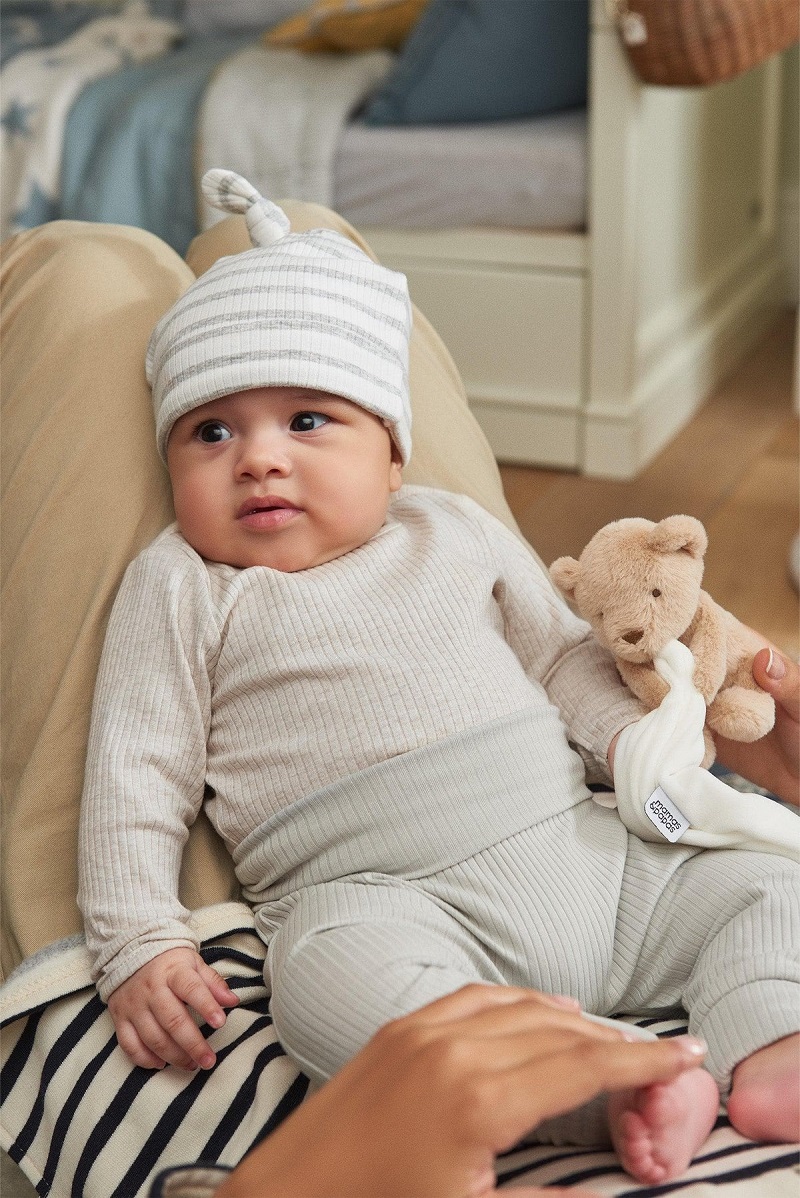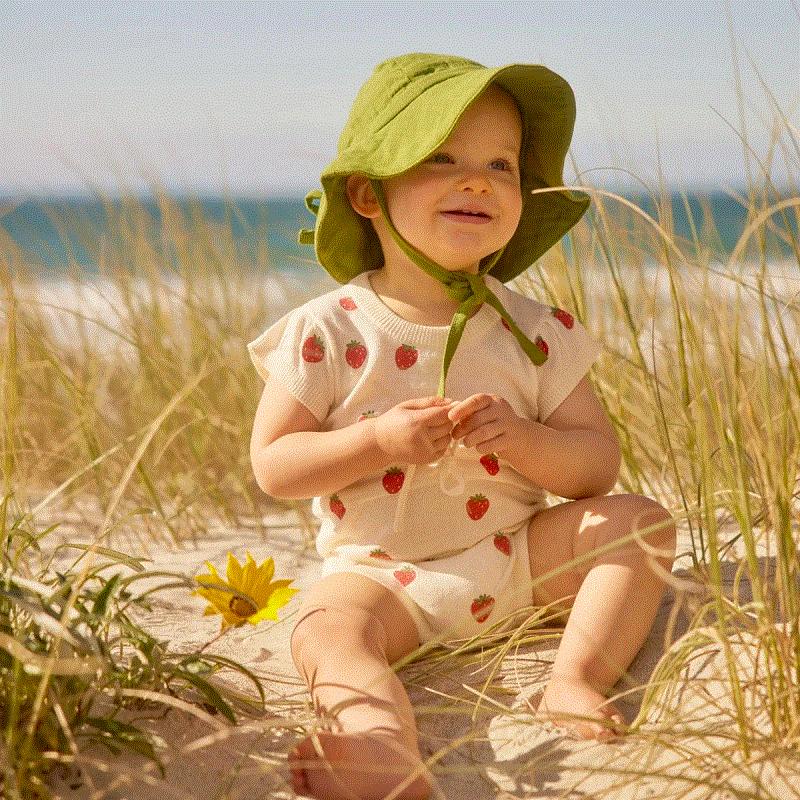Babies spend their first nine months of life in a warm and cosy environment, their mother’s womb, before abruptly transitioning to a cooler one. To regulate their body temperature and adapt to this new environment, their systems must work extremely hard, even though it will take some time for a baby’s internal temperature to return to normal. Therefore, putting a hat on a newborn will assist the baby in staying warm and conserve energy.
Regardless of the temperature, hats can also help to block the sunlight from the baby’s skin and eyes. Babies should be protected from mild sunlight as much as possible when they are outside since it can exacerbate sensitive conditions. Moreover, a hat will be a great option for providing the right protection from chilly breezes and keep infants warm. Baby hair is often thin, and sometimes they remain bald for several months, so hats can also give a great deal of snug comfort.
So, if you’re on the hunt for the perfect newborn hat to complete your baby essentials checklist, there are some important factors to keep in mind when shopping.
The Right Materials

Nowadays baby hats are made from different materials. However, it doesn’t mean that they are all good ones, most of them aren’t, especially the cheap alternatives. Even though polyester is found in many baby clothes, toys and blankets, it is not the safest option for babies. It is a synthetic fabric made up of petroleum, coal, water, and air, yet it’s not breathable, so it can cause overheating and aggravate eczema and other skin allergies.
Therefore, to help your little bundle of joy maintain their body temperature thus preventing overheating and skin rashes shop for 100% organic cotton baby hats that are breathable and soft to the skin. Given its breathability, your infant will stay cool while wearing it. As a result, they can keep their body temperature steady and avoid overheating.
The natural anti-microbial characteristics it possesses can also help prevent skin rash, which is another reason more parents are choosing organic cloth hats for their little joys. One of cotton’s greatest benefits is that it dries rapidly, however, it also breathes well and quickly absorbs moisture. Cotton fabrics are ideal for sensitive-skinned infants since they don’t bother the skin as much as other materials can, such as polyester, acrylic, nylon, rayon, and spandex, which might irritate those with sensitive skin.
To put it simply, the more breathable a material is, the more comfortable it is—even in Australia’s notoriously hot and muggy climate. When looking for the perfect kids’ hats made of 100% organic cotton look for ones that compile with “Global Organic Textile Standards” (GOTS). This includes all steps involved in producing textiles that include at least 70% certified natural organic fibres, including processing, manufacturing, packaging, labelling, trade, and distribution.
Another great alternative besides organic cotton baby hats is the wool ones. By evaporating sweat in the summer and trapping heat within its fibres in the winter, wool can assist in regulating body temperature. It eliminates musty and sweaty odours by absorbing the bacteria that causes it. It doesn’t scratch and is hypoallergenic, making it a wonderful option for infants with sensitive skin.
Design
Besides keeping your little ones protected from the elements, hats can make them look adorable. There are many different designs on the market, so choose the ones that go with your baby’s personality and make them comfortable while wearing them.
Baby bonnets are hats with a brim that goes around the head and are constructed of a soft, light fabric. This hat is simple to put on and take off and is frequently used in the summer to protect a baby’s eyes from the sun.
Infants and small children typically wear bucket hats. Its shape, which is reminiscent of a bucket, is typically made of soft and flexible materials. In cold weather, they can keep the head warm and shield the face and head from the sun. Bucket designs can be adorned with appliques and other extras.
Beanie hats, on the other hand, come in a variety of colours and styles and are excellent for keeping a baby’s head warm. Some beanies even feature entertaining designs or cartoon characters on them. Babies who are constantly moving around are a great candidate for beanies since they will stay in place while the infant is moving.
Baby winter hats come in the form of bunting hats. It is made out of a soft, warm material like fleece or wool. The hood of a bunting hat often covers the head and ears. To prevent the wind from blowing the cap off, they frequently contain ties or strings that you may draw tight.
Size

Baby hats are typically sized based on age. A hat’s size will determine whether or not it will fit your child’s head. Always check the size chart provided by the manufacturer when choosing the right size as manufacturer-specific sizing may vary.
Regular check-ups give parents a sense of whether their kids are the right weight or not. If your infant grows and weighs naturally, you can choose hats for your child by referring to the aforementioned chart.
